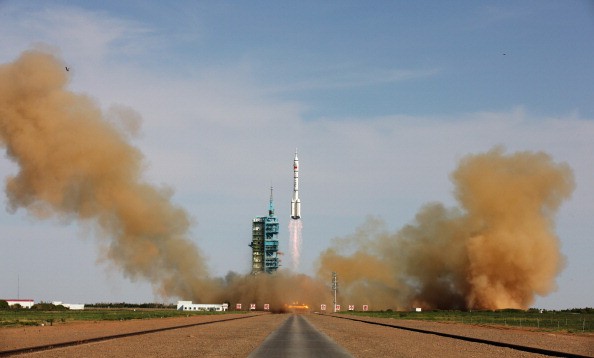China has successfully launched a new communications satellite on Tuesday that will allow passengers of high-speed trains to stream HD videos and aid emergency responders at the scene of natural disasters.
Shijian-13, China's first high-throughput communications satellite, was launched on a Long March carrier rocket from the Xichang Satellite Launch Center in southwest China's Sichuan Province at 7:04 in the evening, according to the state-owned Xinhua News Agency.
The satellite, which has a larger message capacity than those found in previous Chinese communications satellites, is capable of providing better Internet access on vehicles traveling at high speeds as well as in less-developed regions.
While in orbit, Shijian-13 will undergo tests on its broadband multimedia satellite communications system and high-speed laser communication technology, Xinhua said.
"The launch is a milestone for China's communications satellite technology," said Tian Yulong, chief engineer of the State Administration of Science, Technology and Industry for National Defence.
Shijian-13 is also notable for being the first Chinese satellite to be powered completely by electricity, unlike its predecessors that use chemical fuels, according to Xinhua
Using electricity as propellant could potentially boost the satellite's efficiency by as much as 10 times compared with those that use chemicals as a propellant, said Zhou Zhicheng, commander in chief of Shijian-13 satellite system, adding that it can also help extend the service life of the satellite and significantly reduce its launch weight.
China's communications satellite also boasts a large number of indigenously-made components and is the first Chinese high-orbit satellite with a long lifespan to be installed with a laser communications system.
Both the satellite and the rocket were developed by academies affiliated with the China Aerospace Science and Technology Corp., and the China Academy of Launch Vehicle Technology respectively, according to Xinhua.
It was the 246th flight mission involving a Long March carrier rocket.
Shijian-13 is one of two satellites slated for launch in China this year. In March, the China Aerospace Science and Technology Corporation announced the launch of the fourth Fengyun-III weather satellite at the second half of 2017 to improve the country's weather forecasting capabilities as well as environmental monitoring.



























